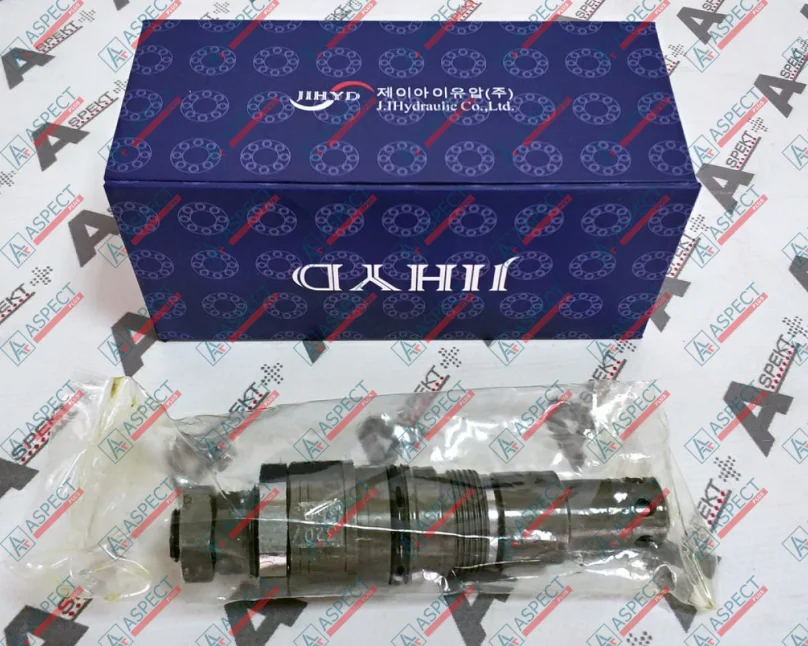A Hyundai engine is a finely tuned machine, and a key indicator of its health is the exhaust. When a Hyundai engine begins to produce excessive smoke from engine, it is a clear warning sign that something is wrong. The color of the smoke, whether black, blue, or white, provides a crucial diagnostic clue for mechanics and operators. Ignoring this symptom can lead to a significant loss of power, reduced efficiency, and eventually, a costly engine repair. This article will provide a comprehensive guide to diagnosing excessive smoke in Hyundai engines. The main idea is to help you understand what each smoke color indicates about the engine’s condition, cover the most common causes, and offer practical solutions, emphasizing the importance of using genuine Hyundai parts for effective and lasting repairs.
The "Smoky" Diagnosis: What Each Color Means
The color of the exhaust smoke is a simple, yet powerful, diagnostic tool. Each color points to a different root cause of the problem.
1. Black Smoke: Excess Fuel or Lack of Air
Black smoke from engine is a result of an "over-rich" fuel-air mixture, meaning there is too much fuel for the amount of air available for complete combustion. This often indicates a problem in the air intake or fuel delivery system.
-
Common Causes:
-
Clogged Air Filter: A dirty air filter restricts airflow, starving the engine of oxygen.
-
Faulty Fuel Injectors: Worn or dirty fuel injectors can have a poor spray pattern or leak, injecting too much fuel into the cylinder.
-
Turbocharger Malfunction: A failing turbocharger cannot compress enough air into the engine, disrupting the proper air-to-fuel ratio.
-
Incorrect Fuel Injection Timing: Incorrect timing can lead to incomplete combustion.
-
2. Blue Smoke: Burning Oil
Blue smoke is a sign that the engine is burning oil. This is a serious issue that indicates internal engine wear.
-
Common Causes:
-
Worn Piston Rings or Cylinder Liners: This is the most common cause. As the rings or liners wear down, oil can leak past them and into the combustion chamber.
-
Worn Valve Guides or Seals: Oil can also leak past worn valve guides or seals and into the combustion chamber.
-
Turbocharger Oil Leak: A damaged seal in the turbocharger can allow oil to leak into the intake or exhaust system. This is a key turbocharger malfunction symptom.
-
3. White Smoke: Burning Coolant or Unburnt Fuel
White smoke from exhaust is typically caused by coolant entering the combustion chamber or by unburnt fuel.
-
Common Causes:
-
Damaged Head Gasket or Cracked Cylinder Head: The most severe cause. A failed head gasket or a crack in the cylinder head allows coolant to leak into the combustion chamber.
-
Faulty Fuel Injection Pump: Incorrect fuel injection timing or pressure can cause unburnt fuel to be vaporized in the exhaust manifold, producing white smoke. This is often accompanied by a distinct fuel smell.
-
Low Engine Temperature: The engine is not reaching its proper operating temperature, preventing the fuel from burning completely.
-
Practical Steps to Solve the Problem
Once the color of the smoke has provided a clue, a systematic approach is needed to pinpoint the problem and perform an effective engine repair.
For Black Smoke:
-
Inspect and Replace Air Filter: The simplest and most common fix.
-
Check Fuel Injectors: Perform a diagnostic check on the fuel injectors. They may need to be cleaned, calibrated, or replaced.
-
Diagnose the Turbocharger: Check the turbocharger for damage or signs of failure (shaft play, leaks).
For Blue Smoke:
-
Check Oil Level: Monitor the oil level. If it's dropping, it confirms oil is being burned.
-
Perform a Compression Test: A compression test can reveal a loss of compression, which points to worn piston rings or a damaged cylinder.
-
Inspect Turbocharger Seals: The seal between the compressor and turbine housing can fail, causing an oil leak and blue smoke.
For White Smoke:
-
Check Coolant Level: A dropping coolant level is a sign of a head gasket leak.
-
Inspect the Cylinder Head and Gasket: A pressure test of the cooling system can help confirm if the head gasket is leaking.
-
Check the Fuel System: A diagnostic check of the fuel pump and injectors can reveal issues with injection timing or pressure that are causing unburnt fuel.
The Importance of Using Genuine Hyundai Parts
When a faulty component is identified, the choice of spare parts for repair is critical. Using genuine Hyundai parts is the only way to ensure the engine's performance is fully restored and that the problem is not repeated. Inferior quality alternatives may not meet the precise specifications for materials and tolerances, leading to:
-
Shortened Lifespan: A low-quality part will wear out much faster than a genuine one.
-
Recurring Issues: A counterfeit fuel injector may not fix the engine smoke problem and could cause new issues.
-
Catastrophic Failure: A failed turbocharger or fuel injector can send metal fragments into the engine, causing a complete failure.
Our company Aspect Plus offers a wide range of genuine Hyundai parts and expert diagnostics services to help you pinpoint and fix the cause of excessive smoke.
Conclusion
Excessive smoke in a Hyundai engine is a serious symptom that demands immediate attention. By understanding what each smoke color indicates, performing a systematic diagnostics, and committing to a high standard of repair with genuine Hyundai parts, operators and mechanics can prevent a minor issue from becoming a major engine catastrophe. This proactive approach ensures the long-term durability and reliability of your machinery.
For professional diagnostics or to purchase genuine Hyundai parts for your engine, contact the specialists at Aspect Plus. We are here to help you get your equipment running cleanly and efficiently.







